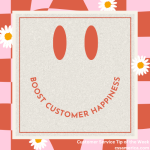It’s not meant to be ominous as much as this old saying is a cautionary tale to multitudes of people in life, especially those of us in customer service.
This saying implies that if we know something is going to happen, then we should be prepared. So how do we get “Forewarned” about customer complaints?
Think about the early warning signs of a complaint. Is the website down? Are callers holding a long time (or longer than normal) before they get to you? Is your company’s call volume up? Is the facility having issues (too cold, too hot, smells)? Has this customer complained before? If the customer’s in front of you, does their body language or facial expression denote they’re about to detonate?
There are ways to become aware that the conflict is imminent.
But what does it mean to be “prepared?” After all, awareness does not equate to preparedness. How do we get “Forearmed” in our customer service world?
Know the Company – Clearly understand policies and procedures for serving customers, service recovery processes, and authority you have to fix a problem or compensate a customer.
Know the Customer – Access client information on their past purchases, service calls, and complaints. Know what causes the issues, how they reacted, how your company responded, and how issues were best rectified.
Know Yourself – Know the right questions to ask; be aware of what triggers your emotions in these tough situations, and bring in your best attitude of patience, empathy, and responsiveness, as well as your mindset as a solution-provider.
We can’t anticipate every customer complaint, but if we can increase our awareness of the triggers of complaints and improve our preparations for the encounters, we can handle them more effectively and more quickly.
Forewarned is Forearmed.
Signup for FREE Tips! Contact Us More Resources for You Visit Our Home Page
























